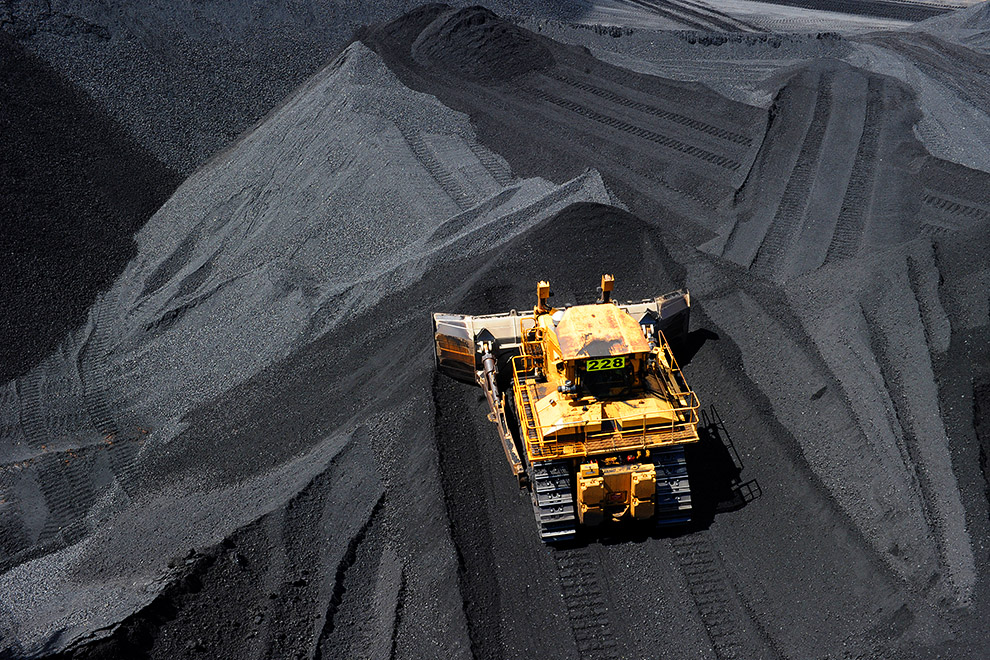The way some of Australia’s political leaders talk, you’d think that public policy was wedded to iron ore prices. Fat and cheery one day, skinny and moping the next. Yet the boom we have just had was a long time coming and unusual in degree. For most of us, it was a oncer: the last comparable boom in commodities was back in the late 1970s and early 80s.
The message of that boom is that we should get ready for a long period of flat or falling commodity prices, some business failures and no great fillip from the big investments in mining capacity. This time round, we might also get ready for new challenges, in the form of global action on climate change, which will suppress commodity trade generally.
Back in 1978 global commodity prices were disrupted by the sharp oil price shock that came after the United States moved from being a net exporter of oil to a net importer. Industries were disrupted, and nowhere more so than in Japan, where basic industries like power generation were fuelled by oil. Australia saw a sudden fever of activity, with Japanese companies (especially, but not exclusively) chasing thermal coal mines, power contracts for aluminium smelters, liquefied gas export contracts, and a range of related resource investments.
Federal treasurer Phillip Lynch, caught up in the excitement, published an extravagant list of boom projects – and the tally seemed to grow daily. The enormous Rundle oil shale project was promoted by Exxon as “Australia’s energy future.” (It didn’t happen.) Such was the warmth of feeling that the head of the Queensland Treasury told me confidently that Queensland would have no need to levy state taxes. (That didn’t happen either.)
Australian thermal coal prices jumped from under US$30 a tonne to almost $60 before collapsing back to around US$30, or lower, in 1984, and staying there until the early 2000s. Iron ore fetched about US$21 a tonne in 1978 and about US$32 in 1982, but was mostly under US$30 from 1984 to 2003. In 2008, though, it reached US$130 a tonne, and coal was well above US$190. Now, both iron ore and thermal coal are a notch above the levels they were for most of the twenty years before 2003.
Australia’s recent boom came on the back of economic conditions that fostered easy credit, global expansion and, especially in China, rising demand. As the boom recedes, global financial conditions are looking more like life support. Chinese demand is sustained largely by government stimulus, and China is attempting to adjust its dependencies (and especially its energy-import habit).
Elsewhere, we see a rising consensus in OECD and other countries about the need for effective constraints on carbon emissions. The growth of solar power production in the United States, Britain, China and elsewhere is strong, and as its cost falls corporate plans are changing. In Australia, one of the leading coal-fired power companies, AGL, announced that it would invest no more in existing or new coal-fired plant – partly, it seems, because of the unwinding of baseload (industrial) electricity demand and partly because consumer behaviour has changed shape.
For these reasons it is hard to understand the gnashing of teeth over the slump in iron ore and other commodity prices. The wonder is that they got so outlandishly high in the first place. (And this may be a good reason why Rio and BHP have taken absolutely no notice of suggestions that they inflate prices by withholding production.)
The fact is that coal and iron ore are not especially hard to find. What is unusual is the rich quality and sheer scale of some deposits. Producers that emerge in boom times have run into trouble in the past, as the cost of new trains, railways and ports collides with prices that are falling, and stay low for years (and years). Mount Isa Mines was once the highest-valued Australian company; then, having jumped on the 1980s boom, its share price fell so low that Xstrata bought it on the cheap. The venerable CSR was undone by that same boom. BHP went off the rails. And a string of lesser lights came and went.
While all this was going on, Australia had made its way to the top of the income table. Ours is now just about the most expensive cost of living anywhere. Nice. The A$ goes a very long way in Bali. This means that the challenge for leaders is to keep the focus on high-value outcomes. This is not an easy task.
Right now, the world has to navigate its way through the shoals and reefs covered by the king tides of finance over the past two decades. A lot of emerging economies have grown used to easy credit and low interest rates. But the gradual reduction in pump-priming by the United States will change that picture, and many – the Reserve Bank’s Glenn Stevens evidently being one – worry that nasty surprises are in store.
Looking ahead, you’d think the leadership would be chucking overboard any excess baggage, testing the vessel for leaks and structural flaws, and aiming generally for fitness. But there’s little sign of that. Instead, it almost seems we are waiting for commodity prices to swing back.
A simple look at the graph of commodity prices or the terms of trade over recent decades would convince most people that the boom we’ve just had was a long time coming – and might be a very long time returning. This is not to say that China’s economy is going off track, but rather that it will be adjusted in many ways; and in any case, the emergence of China as an economic powerhouse was a once-in-a-century event bound to exaggerate commodity price trends.
Japan’s adjustment after the 1970s oil crisis was miraculous. But its goal, in part, was to stabilise the external impacts of commodity price inflation. China’s adjustment has different goals, but it might well match that of Japan in this disrupted period. Either way, there is absolutely no reason to believe that Australia’s terms of trade will be either stable or robust in the years ahead.
The federal government’s Intergenerational Report assumed that our terms of trade would remain well above the levels of the past two decades. Treasurer Joe Hockey talks about the budget in terms of iron ore prices. The PM talks about the hard work being over (if one assumes both that the budget was the sole problem and that it is fixed). The opposition says nothing much at all.
So, as we approach the annual ritual of forecasting and policy prognostication that culminates in the budget, it’s worth wondering whether Australian leadership is looking at the right map. My charts say the tide’s out, and Australia’s course leads to a place marked “Here be dragons.” •




